A perfect sunny winter’s afternoon brought together a group of keen landholders for the BirdLife Pest and Threats Workshop, eager to learn how to better support the birdlife in our region. A healthy bird population is a sign of a biodiverse, resilient landscape — and there are plenty of practical ways we can all help.
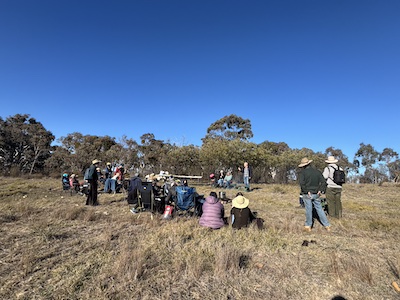
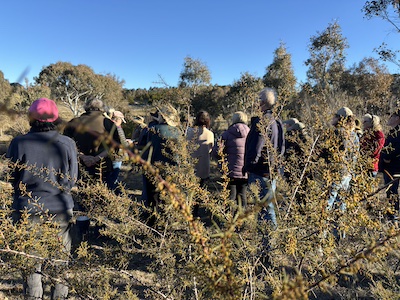
The silent threat of rodenticides
Shirali Dave from BirdLife Australia highlighted the devastating impact of second-generation rodenticides — products like RatSak and Talon — on native predators such as owls, eagles, falcons and quolls. These poisons accumulate in the bodies of rodents, which are then eaten by native wildlife, leading to secondary poisoning and death.
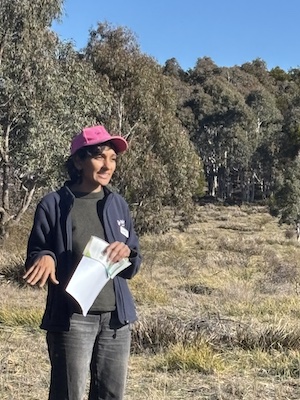
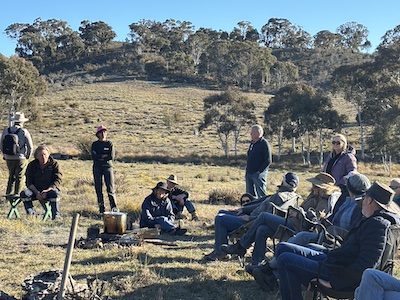
The good news? Safer alternatives exist. Traditional traps, newer electric traps, and first-generation rodenticides that work faster (and break down quicker) all reduce the risk to wildlife. You can read more about these options here.
Want to take action? Write to your Minister and email your council to help get dangerous rodenticides out of our community.
Watch: Learn about rodenticide poisoning (2.5 min video)
Watch: Night Calling – The story of Owl-Friendly Margaret River (35 min)
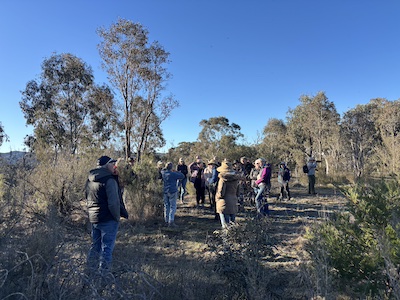
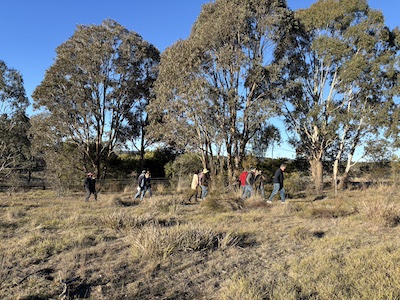 d
d
Noisy miners, cats, and other challenges
Paul Russell from BirdLife Australia explored how native (but pest) species like the noisy miner are impacting woodland birds. These aggressive birds thrive in open, nectar-rich landscapes, chasing off smaller species.
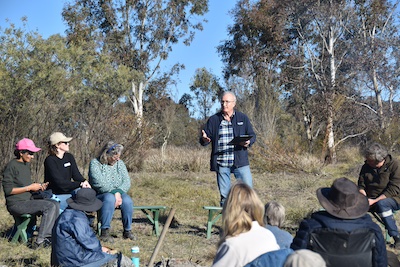
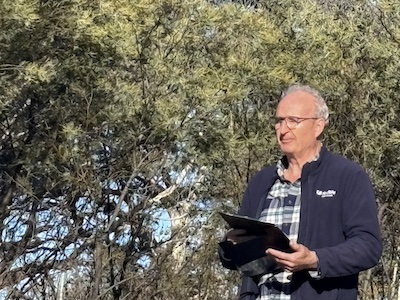
Paul’s advice?
- Plant dense, spiky mid-storey shrubs to provide shelter for small birds.
- Choose native species with smaller flowers (like correas, small grevilleas, and hakeas) to discourage noisy miners.
Paul also spoke about the toll cats — both feral and domestic, take on native wildlife. Pet owners can help by keeping cats in enclosed runs. Advocating for cat containment and curfews at a local level is another positive step.
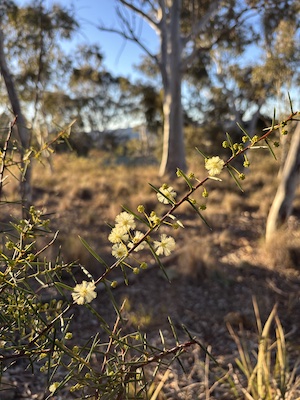
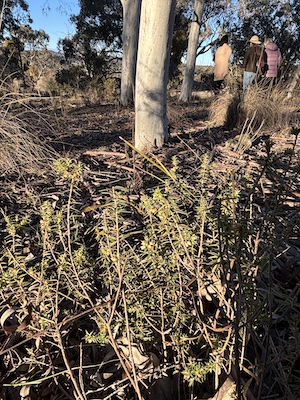

Protection, food and nesting material plants
Foxes: a shared challenge
Leah Samson from Gunning District Landcare painted a sobering picture of fox populations in our region — an estimated 4.7 foxes per square kilometre around Yass. Foxes prey on native species and livestock and are difficult for any one landholder to control.
The message was clear: landholders working together through coordinated programs like the integrated pest management initiative ‘Feral Fighters’ can reduce the populations of foxes and other feral animals. By coordinating the management of feral pests such as foxes, pigs, rabbits across neighbours landholders can make a real difference. If your area doesn’t yet have a feral control program, now’s the time to connect with your neighbours, Landcare group, or Local Land Services team.
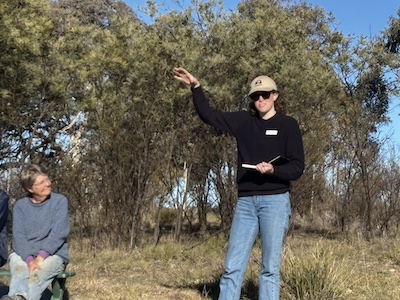
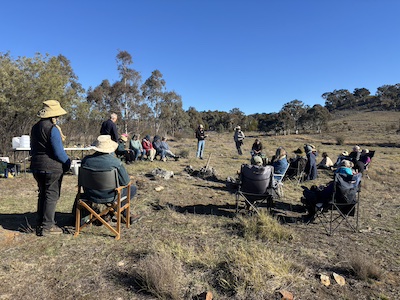
Mess is best!
To wrap up the afternoon, Alison Elvin led participants on a guided walk, showcasing habitat features that support birdlife. From fallen logs and rocks to rough grasses and dense shrubs — all these messy bits of the landscape provide shelter, food, nesting materials and even medicines for birds.
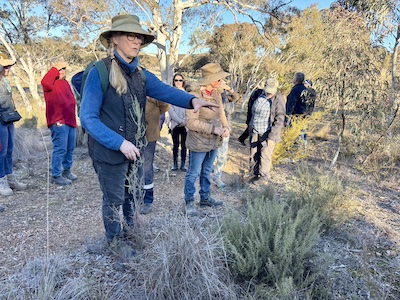
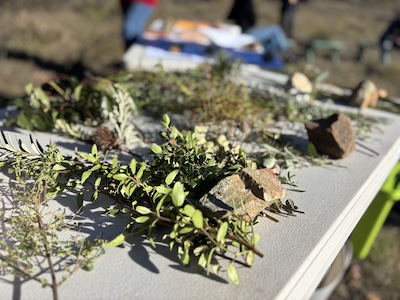
Alison encouraged everyone to think about creating layers of vegetation and habitat stepping stones across properties — small patches of trees, shrubs, or even old fence posts every 70 metres can give birds refuge from predators.
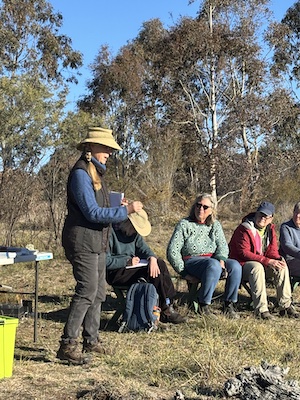
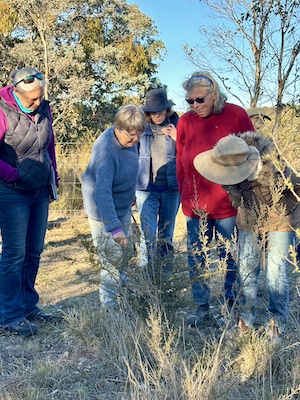
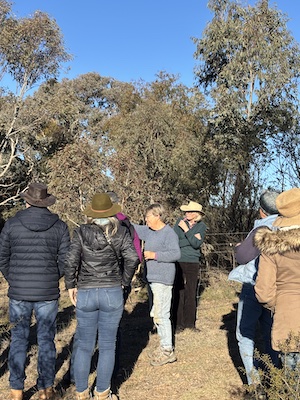
A big thanks to Kate & Jeremy Wilson who opened up their property for the afternoon and provided the wonderfully rich environment filled with birdlife. A perfect place to host the discussion and thanks to all the landholders who attended.

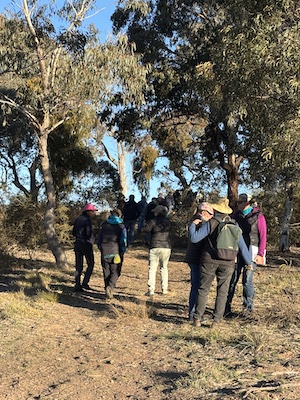
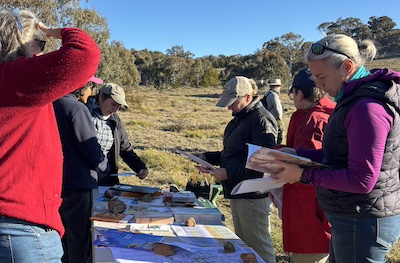
Find more resources:
- Bird-friendly planting list (BirdLife ACT-Yass Birds on Farms)
- Vegetation stepping stones
- Birds on Farms: The 5 Key Features of Woodland Bird Habitat (webinar recording)
- Download the Owl Friendly Garden Poster
Interested in a site-specific habitat restoration plan? Contact Shirali and Paul at [email protected]
Written by Sarah McGrath, YAN local coordinator
